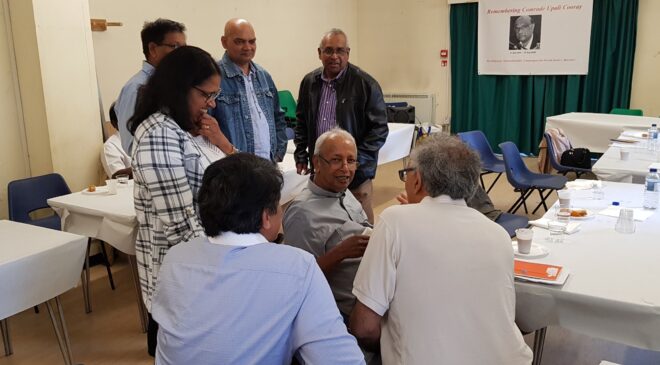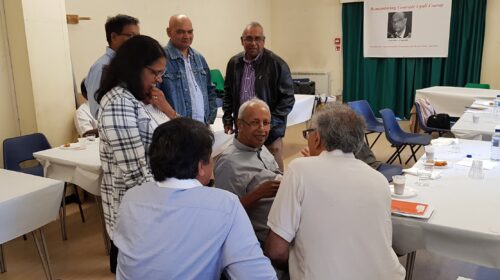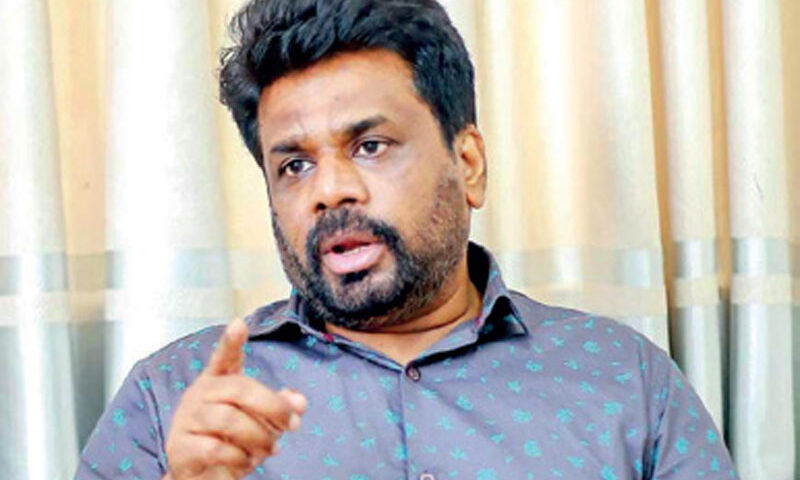
(The Island 24th June 2022)
With the passing of Periyathamby Rajanayagam, another stalwart of the vintage days of left activism in Sri Lanka, is now gone. Rajanayagam was a trade unionist, human rights lawyer, journalist, writer and most importantly a life-long left political activist, to whom social justice, democracy and, with increasing authoritarianism, the right to dissent were consuming passions that he lived out daily until his health failed him in his 86th year. Born in Chunnakam, as the second child in a family of five, Raja’s political activism began at a young age, while he was studying at Skandavarodaya College, in Jaffna. In his teens, Raja joined the Youth League of the Lanka Sama Samaja Party (LSSP), often distributing LSSP publications, with his older brother, to their supporters. His teachers, N.S. Kandiah, and ‘Orator’ Subramaniam of the Jaffna Youth Congress fame were great mentors, who inculcated the spirit of egalitarianism in the young Rajanayagam. Raja entered the Ceylon clerical service when he finished school to support the family, financially. He threw himself into union activism, as a member of the GCSU, the most powerful union backed by the LSSP at that time. Raja soon became the editor of the union magazine The Red Tape, and its Tamil magazine Nava Uthayam.
From this time onwards Raja’s personal life was marked by the twists and turns of the history of the left movement. Raja graduated with a BSc degree from the University of London, as an external candidate, while still an active union representative. Soon after, he became a central committee member of the LSSP and published The Federal Party and the Tamil Speaking Peoples, an important document of the LSSP, for its campaign for the 1960 general election.Raja’s political career experienced a dramatic shift when the LSSP joined the SLFP, in a coalition government in 1964. In his 20s, Raja joined Bala Tampoe, Edmund Samarakody and many others, and helped found the LSSP- Revolutionary Party. The LSSP–R was now in control of the formidable Ceylon Mercantile Union (CMU) and Raja became a central committee member of the LSSP–R. At this time, he passed his law exams with a first class, qualified as an attorney-at-law, and brought out the textbook titled Criminal Procedure in Sri Lanka, encouraged by his law lecturer, as there was a dearth of such textbooks.
Shunning lucrative practice in other areas, Raja naturally became a trade union lawyer. He was to be found in the Sri Lankan labour tribunals almost daily, defending workers, and published The Labour Tribunal Digest, summarising leading tribunal precedent cases that established important labour law principles.
When the 1971 JVP uprising was crushed by the coalition government, Raja also became a human rights advocate, representing newly incarcerated JVP leaders. He visited prisons in Jaffna, Bogambara and Welikade to meet Rohana Wijeweera, Gamanayake, Lionel Bopage, and others. He represented 13 of the top JVP leaders in the courts that were specially set up with no due process to deal with these ‘terrorist’ cases. His representation of JVP leaders came under scrutiny. His erstwhile left comrades were now in power with the coalition government and were prosecuting the JVP youth vigorously. In 1972, the Republican constitution was enacted, giving Buddhism a foremost place, and the members of the LSSP, and CP fully participated in this exercise. Raja, disillusioned by the developments within the mainstream left, and the corresponding rise in majoritarianism and the shrinking democratic space for alternative left forces, decided to take a break from politics and left for London in 1973.
Raja began work as a solicitor for the Bexley Heath local authority in Britain. Soon, Raja and other kindred souls set up the Ceylon Solidarity Movement. Raja wrote and published a pamphlet, The Island of Terror, based on his experiences of representing JVP detainees. From that time onwards Raja’s home became a welcoming place for many left activists who visited London from Sri Lanka, stayed with him, spoke at meetings, met parliamentarians and always paid the obligatory visit to Marx’s grave, all of which Raja organised. Rohana Wijeweera, Vasudeva Nanayakkara and even Mahinda Rajapakse has stayed in the home of Raja. When Mahinda Rajapakse went to Geneva to complain to the UNHRC about Sri Lanka’s human rights violations he was assisted by Raja.
When under the Jayewardene government the militarisation of the north and violent attacks against Tamils increased, Raja became drawn into yet another phase of his activist career, and was one of the leading figures in forming the Standing Conference of Tamils (SCOT) and its human rights arm in London. A smaller group within SCOT became the nucleus for the Tamil Times, an English language monthly magazine that was launched in 1981. The editorial responsibilities fell mainly on Raja’s shoulders. In the next 25 years or so, the Tamil Times emerged as the foremost voice of Sri Lankan Tamils living in the diaspora in the English language with N.S. Kandiah as its managing director. Its initial aims were to make a stand in support of the beleaguered Tamil community in Sri Lanka, and to keep the Sri Lankan diaspora communities around the globe abreast of developments.
In a few years, developments in Sri Lanka created a divergence of perspectives within the editorial group, where some supported militant Tamil nationalism unequivocally. Raja and others were perturbed by the intolerant nationalism, militarism, Tamil-on-Tamil violence and the crushing of dissent within the Tamil polity. Raja found the LTTE’s claim to be the sole representative of the Tamils abhorrent. By around 1987, the disagreement was settled in Raja’s favour, and he continued as the editor until January 2006. As Raja’s editorials became increasingly critical of armed violent actors, he was subjected to threats and intimidations. For a period, the Tamil Times was the only one of its kind, offering critical support to the Tamils in their quest for justice and democratic rights. It was read with interest for Raja’s editorials but not just by Tamils but also by various representatives of governments, members of the human rights fraternity, journalists and academics. The magazine was supported by subscriptions entirely and from across the globe.
Raja was also a pioneer and consistent advocate for Sri Lankan human rights in the UNHRC, spanning over two decades. He began this work as the representative of the human rights arm of SCOT to highlight the plight of the Tamils. He produced two publications, Law and Practice of Arbitrary Detention in Sri Lanka and Arbitrary Killings in Sri Lanka, which were based on various submissions he had made to the Human Rights Council. As his perspective gradually changed, he began to openly express his misgivings over the direction of the Tamil struggle, and raised questions about Tamil-on-Tamil violence at the UNHRC sessions. Between the prevarications of the Sri Lankan state on its human rights record and the deeply partisan and selective human rights accounts from Tamil nationalists, Raja often cut a lone figure in his commitment to truth-telling. Raja viewed the LTTE’s ascendancy, and its implications for the Tamil people with great trepidation. He was much affected by the many political killings of dissenters by the LTTE. Some were his friends.
I had the great fortune to be a fellow steering group member of the Sri Lanka Democracy Forum, (SLDF) with Raja from 2002 to 2009, during the peace process. It was a tightly knit group that campaigned for peace, democracy and justice. During these years Raja was a frequent visitor to my home. He would be up for robust political discussions that would begin at 6pm and end around 5am the next day. His involvement with SLDF was the last stint of activism in a long line of campaigns he had set up. Raja’s eloquence as a writer and public speaker, often trenchantly critical of armed actors, and the senseless violence of the civil war, endeared him to many within the dissenting Tamil community in London. He remained a towering figure of inspiration to many of us.
The Raja we all knew was a man of much warmth, compassion, humour, and political integrity. He loved engaging with people, especially activists, of all ages and backgrounds. This is what he found most pleasurable. When Raja’s wife of 25 years, Regina, died he had to start life again, but he sustained himself through writing, campaigning, befriending people and speaking truth.
(Nirmala Rajasingam is a Sri Lankan British national resident in London. A political activist and artiste, she was a close ally of P. Rajanayagam)



